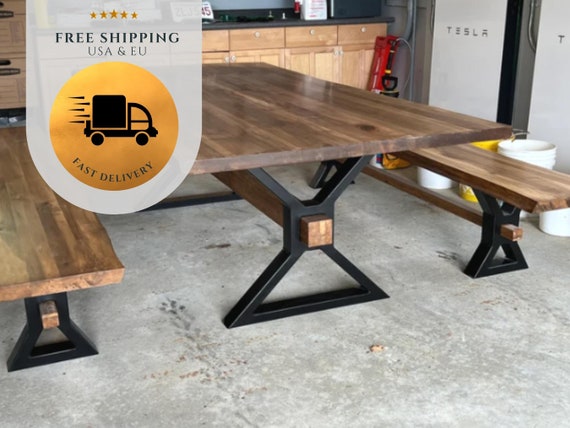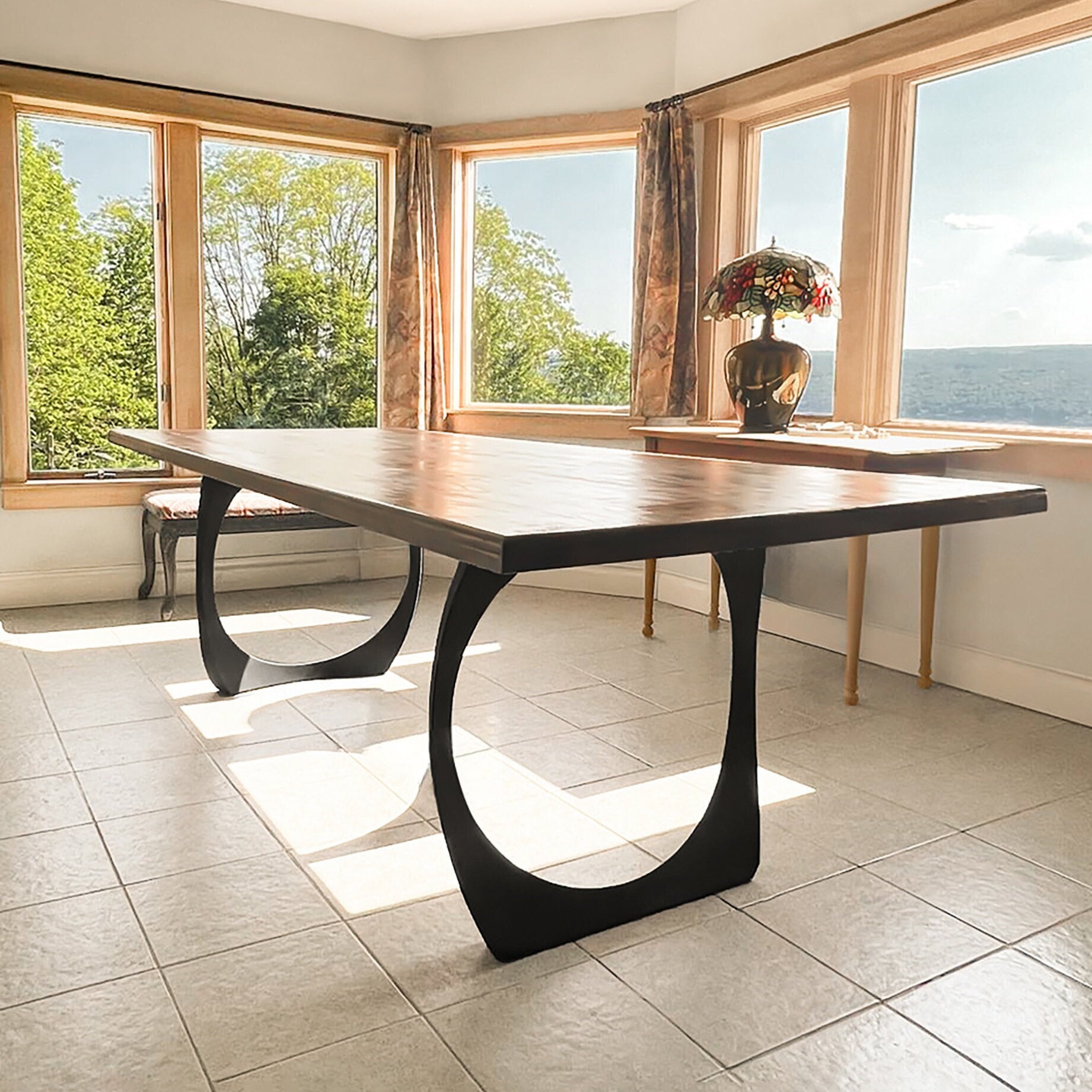A Thorough Take A Look At Table Leg Styles: Locating the Ideal Match
Selecting the best table leg design is critical for both aesthetic appeal and useful capability. Typical four legs offer classic style and stability, while the pedestal base supplies enhanced legroom and a modern look. For those with larger tables, trestle legs make sure tough support, whereas hairpin legs present a mid-century modern vibe with their minimalist layout. The x-shaped legs mix contemporary style with boosted stability. Each of these options brings special advantages, making the option much more than just an issue of choice. Explore additionally to uncover which style completely matches your dining space and way of living.
Conventional 4 Legs
Amongst the various types of table leg styles, the typical four-leg layout stays a timeless selection for numerous families. This classic setup offers a harmonious blend of performance and aesthetic appeals, making it a seasonal fave. 4 legs provide balanced support, ensuring the table remains steady and with the ability of bearing considerable weight. This is especially useful for homes that frequently hold large celebrations or use their table for numerous functions, such as job or crafting.
From an aesthetic point of view, the typical four-leg style can be easily adjusted to numerous indoor designs. Whether crafted from wood, metal, or a mix of materials, these legs can be intricately carved, streamlined and minimalistic, or anything in between. Their versatility enables them to match both rustic and modern setups effortlessly.
In addition, the simple framework of the four-leg style promotes convenience of movement and positioning within a space. Unlike more complicated bases, this design reduces blockages, offering adequate legroom for restaurants. In summary, the conventional four-leg table leg design weds withstanding beauty with functional performance, making it an astute option for those looking for both form and feature in their eating furnishings.
Stand Base
Frequently commemorated for its classy and space-efficient design, the pedestal base is a notable alternative to the typical four-leg configuration in table leg designs. This distinctive base usually features a solitary main column supporting the table top, which can differ in form, from ornately sculpted timber to sleek, contemporary metal. One of the primary benefits of the pedestal base is its capacity to maximize legroom and seating versatility. Without corner legs, diners are paid for greater freedom of motion, making it a suitable option for round and oblong tables that promote even more intimate and comprehensive celebrations.
Furthermore, the pedestal base's main assistance can take care of considerable weight, enabling the use of larger tabletops, such as marble or thick hardwood. This strength combined with its aesthetic flexibility makes the pedestal base a prominent option in both conventional and modern indoor settings. It can flawlessly incorporate with various layout themes, from classic beauty to minimalist modernity. The central column itself uses a canvas for intricate styles and imaginative expressions, including an element of visual interest below the table. In summary, the stand base integrates functionality with style, making it a refined and practical option for diverse eating environments.
Trestle Legs
Trestle legs offer a robust and ageless foundation for eating tables, identified by their straight cross-bracing and sturdy assistance light beams. Originating from middle ages times, this style has actually evolved yet kept its necessary framework, making it a perennial fave in both traditional and modern setups. The click for more main trestle beam of light, commonly supported by 2 or even more vertical messages, uses exceptional security, enabling for bigger table lengths without the requirement for added legs.
A considerable benefit of trestle leg tables is the enough legroom they provide. Unlike tables with 4 edge legs, the lack of blockages at the table's sides supplies unimpeded space for chairs and restaurants, improving convenience and access. This makes trestle tables perfect for suiting larger events, whether in an eating area navigate to these guys or a banquet hall.
From rustic farmhouse to smooth modern-day layouts, trestle legs can be tailored to match specific preferences. Their enduring allure and practical advantages make trestle legs a compelling choice for those looking for both design and functionality in their eating table.
Hairpin Legs

The allure of hairpin legs hinges on their simpleness and adaptability - dining room table legs. Available in a range of materials, including steel and brass, they can be completed in countless colors to match different indoor styles. Whether coupled with a rustic wooden tabletop or a contemporary glass surface area, barrette legs effortlessly blend capability with a touch of vintage appeal
Toughness is another notable feature of hairpin legs. In spite of their delicate look, these legs are engineered to birth considerable weight, making sure the dining table continues to be steady and safe and secure. In addition, they are reasonably easy to mount, making them a preferred selection for DIY fanatics and expert furniture manufacturers alike.
X-Shaped Legs

Created from materials such as steel, timber, or a mix of both, X-shaped legs can be tailored to match different design choices. Steel legs typically offer a smooth and industrial feeling, suitable for loft-style homes and modern dining rooms. On the various other hand, wood X-shaped legs use a warmer, much more rustic allure, appropriate for farmhouse or diverse interiors. The flexibility in materials permits home owners to tailor their eating tables to better fit their overall layout scheme.
In addition, the engineering behind X-shaped legs makes certain also weight circulation, reducing the threat of wobbling and improving longevity. This makes them specifically well-suited for larger dining tables that require extra assistance. Fundamentally, X-shaped legs mix important link practical engineering with contemporary visual appeals, making them an ageless option for varied dining atmospheres.
Conclusion
A comprehensive understanding of eating table leg designs reveals the unique characteristics and advantages of each layout. Standard four legs offer security and timeless allure, while stand bases provide legroom and a structured appearance. Trestle legs ensure durable support for bigger tables, and hairpin legs present a mid-century modern-day visual. X-shaped legs combine modern layout with improved stability. Choosing the appropriate leg style ensures both useful and aesthetic complete satisfaction in any type of dining room.